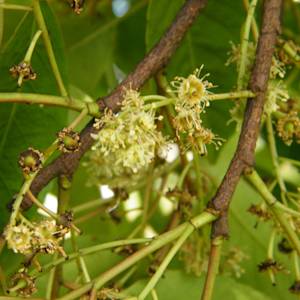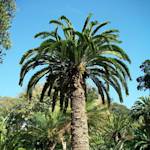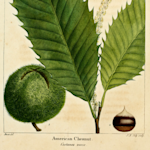Whitebark pine
2024 CE • northern Rocky Mountains and the Pacific Northwest
"Whitebark pines grow throughout the Northern Rockies of the United States, the Southern Rockies of Canada, and in the Cascades and Sierras. Thriving in harsh and rocky areas, they can be found at tree line in subalpine regions, often exposed to high winds and weather. In optimal conditions, whitebark pine can grow up to 60 feet, but atop a mountain, it’s not unusual to see much shorter, gnarled looking trees growing close to the ground . . . Since whitebark pines dominate the high alpine community, they play a pivotal role in the hydrology of the drainages over which they preside. Growing on the wide ridges of mountains, whitebark pines act as a snow fence, accumulating high elevation snow. Over the long alpine winter, these piles can be substantial. Because they take longer to melt in the spring, the piles play an important role in extending stream flow periods throughout the entire watershed . . . Unfortunately, this crucial species faces many threats. White pine blister rust, a fungal disease from Europe, has infected many whitebark stands across its range. Fortunately, a small number of trees have a genetic resistance to the disease, so public agencies, like the U.S. Forest Service, have been working to harvest rust-resistant cones in the hopes of growing rust-resistant trees.Additionally, warming temperatures caused by climate change have allowed the ever-present mountain pine beetle to colonize the high elevation zones where whitebark live. Trees already suffering from blister rust as especially susceptible to the relatively new threat of pine beetles, exacerbating an already serious issue. Decades of wildfire suppression have impacted the whitebark pine too. Infrequent, low-level wildfire cycles historically helped remove fire-intolerant species such as subalpine fir and Engelmann spruce from competing with whitebark seedlings. Absent fire, these trees grow faster and better than whitebark pines, ultimately converting whitebark forests to fir and spruce forests. As well, fire helped remove older whitebark pines that are more susceptible to beetle and white pine blister rust, thus slowing the spread of each."
"Tree Profile: Whitebark Pine," National Forest Foundation.
Image: Whitebark pine in Waterton-Glacier International Peace Park, GlacierNPS via Flickr, Public domain


Learn about Maya Lin’s fifth and final memorial: a multi-platform science based artwork that presents an ecological history of our world - past, present, and future.

Discover ecological histories and stories of former abundance, loss, and recovery on the map of memory.

Learn how we can reduce our emissions and protect and restore species and habitats – around the world.

See how art can help us rethink the problems we face, and give us hope that each one of us can make a difference.

Help make a global memorial something personal and close to home. Share your stories of the natural world.


